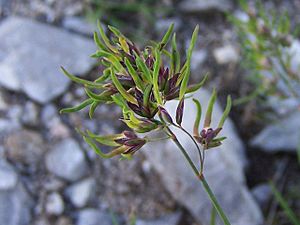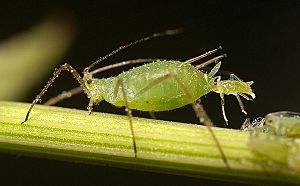Viviparity facts for kids
Viviparous animals are born in a special way. This means the baby animal grows inside its mother's body. The eggs are fertilized inside the mother, and the young ones develop there. The most important part is that the growing baby gets all its food and nutrients from a special organ called a placenta. This placenta is connected to the mother's womb. Almost all mammals, like humans, dogs, and cats, are viviparous. The only exceptions are monotremes, like the platypus, which lay eggs.
Ovoviviparity: A Different Way to Be Born
Some animals might seem viviparous, but they are a bit different. This is called ovoviviparity. Many reptiles, like some snakes and lizards, keep their soft-shelled eggs inside their bodies. The baby animal grows inside the egg, using the food stored within that egg. It does not get food directly from the mother's body.
However, some amphibians and a few reptiles are truly viviparous. This means their babies get food directly from the mother, just like mammals do.
Vivipary in Plants

Did you know that some plants can also be viviparous? Viviparous plants produce seeds that start to germinate (begin to grow) while they are still attached to the parent plant.
A great example is many mangrove trees. Their seedlings start to grow and get energy from the parent plant. When they are big enough, they drop into the water. This helps them float away and find a new place to grow.
Sometimes, you might see seeds already growing inside an overripe fruit, like a jackfruit. This looks similar, but it's not true vivipary. It just means the fruit is very moist and humid inside, like wet soil. The seeds would also grow if they were planted in soil.

See also
 In Spanish: Viviparidad para niños
In Spanish: Viviparidad para niños

